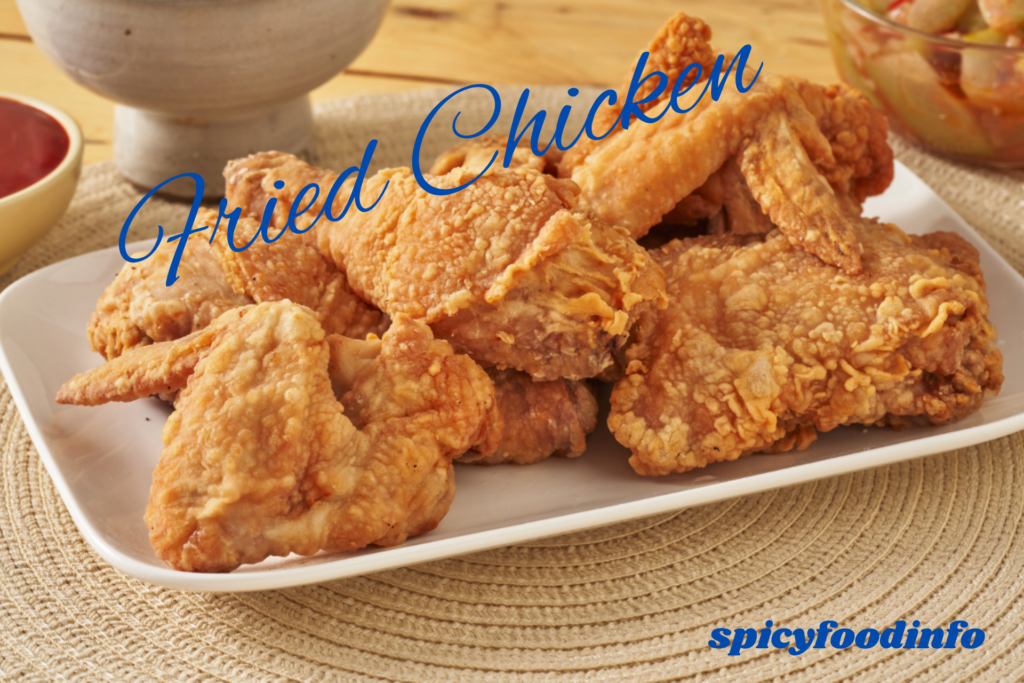How to Make Dan Dan Noodles at Home

People love dan dan noodles (担担面, dàn dàn miàn) for their intense spiciness, numbing effects and rich nutty taste. Starting in the lively city of Chengdu, China, a simple bowl of noodles is now loved everywhere.
You will discover in this detailed guide how to create dan dan noodles in your kitchen, along with descriptions of all the ingredients and techniques. If you are new to cooking or a baking pro, I will take you through all the steps needed to make rich dan dan noodles at home.
What Are Dan Dan Noodles?
Traditionally it was a street vendor food in Sichuan province, hawkers would carry it around on carrying poles under their shoulders (“dan dan” means “carrying pole”). The baskets these vendors would carry (with noodles and sauce at either end) were ones in which they’d serve quick and spicy bowls to hungry passersby.
While today many variations on dan dan noodles exist, the basic components have not changed: chewy wheat noodles, a savory, spicy sauce, and preserved vegetables.
The Flavor Profile That Makes Dan Dan Noodles Unique
What sets dan dan noodles apart is the perfect balance of:
- Chili oil and chili flakes giving it lots of spicy heat.
- Sichuan peppercorns can numb parts of the mouth.
- The umami from soy sauce as well as pork.
- From sesame or peanut paste there is nutty richness.
- Black vinegar is an artificial sour brightness.
- Balance of the spice sweet.
It’s the great multi-dimensional flavor combination that makes dan dan noodles so addictive and delicious.
Why Make Dan Dan Noodles at Home?
It’s incredibly rewarding to make dan dan noodles at home:
- Customizing: Choose the spice level and the quality of the ingredient.
- Freshness: We can often tell where ingredients are fresher and have more life in them — homemade noodles, homemade sauce, for example.
- Healthier, depending on the type of recipe, adjust the fat content or substitute ingredients so it’s appropriate for the dietary needs.
- Explore Sichuan culinary traditions and appreciate various local ingredients along with them.
- Economical: It’s cheaper to eat at home than it is to eat out.
Ingredient Deep Dive: Why Each Component Matters
Let’s have a look at the main ingredients and what they do before we get in the kitchen.
1. Noodles
Thin wheat noodles or fresh Chinese egg noodles are the ideal ones for dan dan, because they are firm with a springy toothsome texture. The sauce holds well to these noodles and when cooked they have a good bit of chewiness to them. Run when seeing rice noodles or overly thick varieties.
2. Ground Pork
It is rich with savoriness and texture. The silky noodles were contrasted with a small cooking (often until a bit crispy with it). The choice is largely personal: lean or fatty pork, but fat can make it taste much better.
3. Chili Oil
Making chili oil at home is pretty straightforward, yet it is nice to make sure of all the ingredients when purchasing store brought chili oil.
4. Sichuan Peppercorns
The spiciness is simply why these special peppercorns—the famous ‘mala’ sensation of a tingly, numbing heat— are so unique. They improve in aroma by toasting before grinding.
5. Sesame Paste or Peanut Butter
A creamy, nutty layer from sesame paste (sesame seeds ground to a paste) or smooth peanut butter is on hand to balance the spiciness. Natural peanut butter is a common substitute, authentic sesame past has a deeper flavor.
6. Soy Sauce
Having soy sauce in there gives it that salty umami to the sauce. The one you want is the light soy sauce for it has the strongest salty taste.
7. Chinese Black Vinegar (Chinkiang Vinegar)
Acidity and complexity come from this vinegar and it cuts through the richness and balances the flavors.
8. Garlic and Ginger
Warm and depth with fresh aromatics.
9. Preserved Vegetables (Optional)
Sometimes texture and a tangy bite are added from pickled mustard greens or radish.
Step-by-Step Recipe: How to Make Dan Dan Noodles at Home
Step 1: Make the Chili-Sesame Sauce

Ingredients:
- 3 tablespoons chili oil (homemade or store-bought)
- 2 tablespoons light soy sauce
- 1 tablespoon Chinese black vinegar
- 2 tablespoons sesame paste or natural peanut butter
- 1 teaspoon sugar
- 1 teaspoon minced garlic
- 1 teaspoon minced ginger
- 1/2 teaspoon toasted ground Sichuan peppercorns
- 2 tablespoons chicken or vegetable broth (to thin the sauce)
Instructions:
- Combine chili oil, soy sauce, black vinegar, sesame paste and sugar in a bowl and whisk until smooth.
- Add garlic, ginger and broth and stir until sauce is pourable.
- Mix, add ground Sichuan peppercorns and mix well.
Pro tip: Toast Sichuan peppercorns in a dry pan over a medium heat for 2–3 minutes until fragrant, then grind finely (in a mortar and pestle or spice grinder).
2: Prepare the Pork Topping
Ingredients:
- 200g ground pork
- 1 tablespoon vegetable oil
- 1 tablespoon soy sauce
- 1 teaspoon sugar
- 1 teaspoon Shaoxing wine (optional)
- 1 clove garlic, minced
- 1/2 teaspoon chili flakes (optional)
- Salt to taste
Instructions:
- In a skillet heat oil over medium high.
- Sauté garlic until fragrant, add.
- Break up pork, cook through until crispy and brown.
- Pour in some soy sauce, sugar, Shaoxing wine, chili flakes and salt and season.
- Sauté for another 2–3 minutes until caramelized.
3: Cook the Noodles
Instructions:
- Put a large pot of water on to boil.
- Cook the noodles 3 – 5 minutes (or as directed).
- Get out and rinse in cool water to stop cooking.
- To keep from sticking, toss with a teaspoon sesame oil.
4: Assemble the Dish
- Noodles divided into bowls.
- Dice noodles equally and spoon sauce over it.
- Cook the pork and top with it.
- Scatter some chopped scallions, crushed peanuts and extra peppercorn powder over everything as garnish.
- Eat well mixed.
Making Your Own Chili Oil at Home (Optional but Recommended)
Ingredients:
- 1 cup vegetable oil
- 1/4 cup crushed dried red chilies
- 2-star anise pods
- 1 cinnamon stick
- 1 tablespoon Sichuan peppercorns
- 3 garlic cloves, smashed
- 1 teaspoon salt
Instructions:
- Start by infusing flavors with heat oil with star anise, cinnamon, Sichuan peppercorns and garlic.
- Remove aromatics.
- In a heat proof bowl, pour hot oil over crushed dried chilies.
- Stir and then cool to room temperature.
- Keep in an airtight jar.
Making your own chili oil will make your dan dan noodles fresher and more vibrant.
Ingredient Variations and Substitutions
- Protein: Substitute ground chicken, turkey, tofu or mushrooms if you’re vegetarian.
- Noodles: For diets, use gluten free noodles or shirataki noodles.
- Nut paste: You can replace sesame paste with peanut butter or tahini.
- Vinegar: If black vinegar is unavailable, then use rice vinegar although the flavor won’t be the same.
- Vegetables: But you can add bok choy, spinach or bean sprouts for freshness and crunch.
Storage and Leftover Tips
- Refrigerate, pork in one airtight container, sauce in another for up to 3 days.
- To avoid sogginess, keep noodles separate.
- Heat the pork topping gently in a pan.
- Best texture and flavor should be for fresh assembles.
Nutritional Information and Benefits
Dan dan noodles combine protein, healthy fats, and complex carbohydrates.
- Protein: Essential amino acids supply ground pork.
- Healthy fats: Unsaturated fats good for your heart: sesame paste is packed with them.
- Capsaicin: The active compound in chili oil may be good for metabolism and also reduce inflammation.
- Antioxidants: Garlic, ginger and Sichuan peppercorns also supply immune support.
- Fiber and vitamins: Adding vegetables zaps vitamin A and C as well as fiber.
Sodium and fat content demand a moderate approach, but dan dan noodles can be a part of an eating plan.
Cultural Context: Dan Dan Noodles Around the World
Sichuan’s Dan dan noodles have since spread far beyond Sichuan and have inspired countless regional and international variations:
- In Taiwan, the dish usually also has pickled mustard greens available and a milder sauce.
- In Japan, they’ve taken to adapt dan dan noodles with miso-based sauces.
- Add ingredients—you guessed it—like ground beef or they use peanut sauce instead.
For dan dan noodles from home, you can dig into the history of global places while sticking to the original ones.
Frequently Asked Questions (FAQs)

Q1: Can I make dan dan noodles vegan?
Yes! Instead of pork, use tofu or mushrooms and instead of chicken broth, use vegetable broth. To make tamari or soy sauce, make sure to find ones that don’t have animal products and find one that is soy free if you can.
Q2: What noodles should I use if I can’t find Chinese wheat noodles?
Linguine or thin spaghetti can do in a pinch, but it doesn’t have exactly the same texture.
Q3: How spicy are dan dan noodles?
Traditionally they are medium to really spicy hot but you can tailor the chili oil and peppercorns to taste.
Q4: Is dan dan noodles gluten-free?
Traditional noodles and Soy sauce are made of gluten. For a gluten free version use gluten free noodles and tamari sauce.
Q5: How do I reduce the numbing sensation if it’s too strong?
It is worthwhile limiting your Sichuan peppercorns or even just skip it. If you’re looking for pure heat without the numbness, use more chili oil or regular chili flakes.
Final Thoughts
Cooking up dan dan noodles at home is more than just cooking a meal; it’s about celebrating the heritage of Sichuan cuisine and indulging your taste in a sauce made from multiple layers of flavor. This step by step recipe breaks down of what makes an amazing dish of Sichuan sauce dos and don’ts of how to get the perfect balance of spice, numbness, umami and nuttiness in every bite.
It’s up to you – follow the traditional recipe or add some of your favorite ingredients – this dish is sure to make its spot in your home cooking repertoire. Experience the adventure of preparing authentic dan dan noodles at home!
If you liked reading about these Dan Dan Noodles, you may also smile — every recipe here has more than ingredients. Hand made with love, care and a love for flavor all round. ❤️🍜
“Visit our website for more exciting and delicious recipes!”


